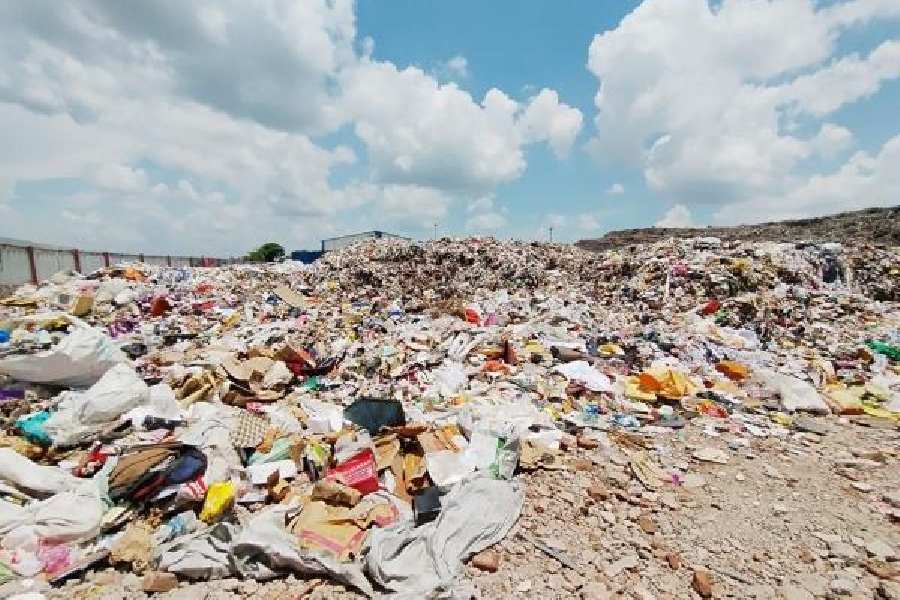Tonnes of waste like glass, rubber, rags and paper are lying stacked at the Dhapa waste disposal ground as recyclers are unwilling to take these items.
This has raised a question on the principle behind waste segregation, officials of the Kolkata Municipal Corporation have said.
Letters to many recyclers have returned to the civic body while some who could be contacted by other means showed interest in taking the plastic waste only.
Waste segregation at source was started across the Kolkata municipal area in December last year.
Officials of the Kolkata Municipal Corporation (KMC) said there were very few takers of some dry waste items, other than plastic of good quality (those which are not contaminated by other waste).
Dry waste is a term loosely used for non-kitchen waste that includes paper, metals, rags and plastic.
Waste segregation at source starts with the collection of dry and wet waste separately from households, though it has not been achieved in many parts of Kolkata even now.
A portion of wet waste or biodegradable waste is being used to produce bio-CNG and manure. The rest is still being dumped at the Dhapa waste disposal ground.
Dry waste has many items and each of them can have reuse value.
KMC officials said in an ideal condition, each of these items would be taken away by recyclers and the waste disposal site at Dhapa would remain free.
Only inert items like road dust and silt, which cannot be recycled or used as raw materials for other products, will be dumped in the Dhapa site.
“The life of the waste disposal site would increase if we dump only the inert items there and recycle everything else. As land is scarce in a city, we have to use the waste dumping site very judiciously,” said a KMC official. But if a good portion of the waste is still dumped in Dhapa, the land there will fill up faster, he added.
The lack of takers of much of the dry waste has emerged as a challenge in achieving the objective of expanding the life of the Dhapa waste disposal ground.
“We are facing some challenges in disposing of some of the dry waste, including plastic. We are trying to find a solution,” Debabrata Majumdar, the mayoral council member in charge of solid waste management, told The Telegraph. Majumdar did not want to elaborate but admitted there was a problem.
Civic officials said Kolkata produces about 4,500 tonnes of waste every day and about 15 per cent of the waste is plastic, metal, glass and rags among others.
Since waste segregation at source has not started across the city, the volume of dry waste coming separately is less than what was expected. Had it started everywhere, the volume of waste lying in Dhapa would have been far more, an official said.
“Tonnes of such waste has already accumulated and we had to build fencing to stop them from spilling over onto the road through which trucks carrying waste enter the waste disposal ground,” said the official.
KMC sources said a list of authorised recyclers was given by the West Bengal Pollution Control Board.
When asked about the matter, a senior official of the PCB said: “We have already told KMC what they should do. It is the responsibility of the municipal corporation to connect with recyclers of various items. We have given them a list of recyclers of plastic,” he said.
Sunil Pandey, the director of the waste management division at The Energy and Resources Institute (TERI), said that items like metal, rags and paper have good demand in the recycling chain.
“The authorities must look into this issue. There is no reason why recyclers would not be interested in them,” he said.
